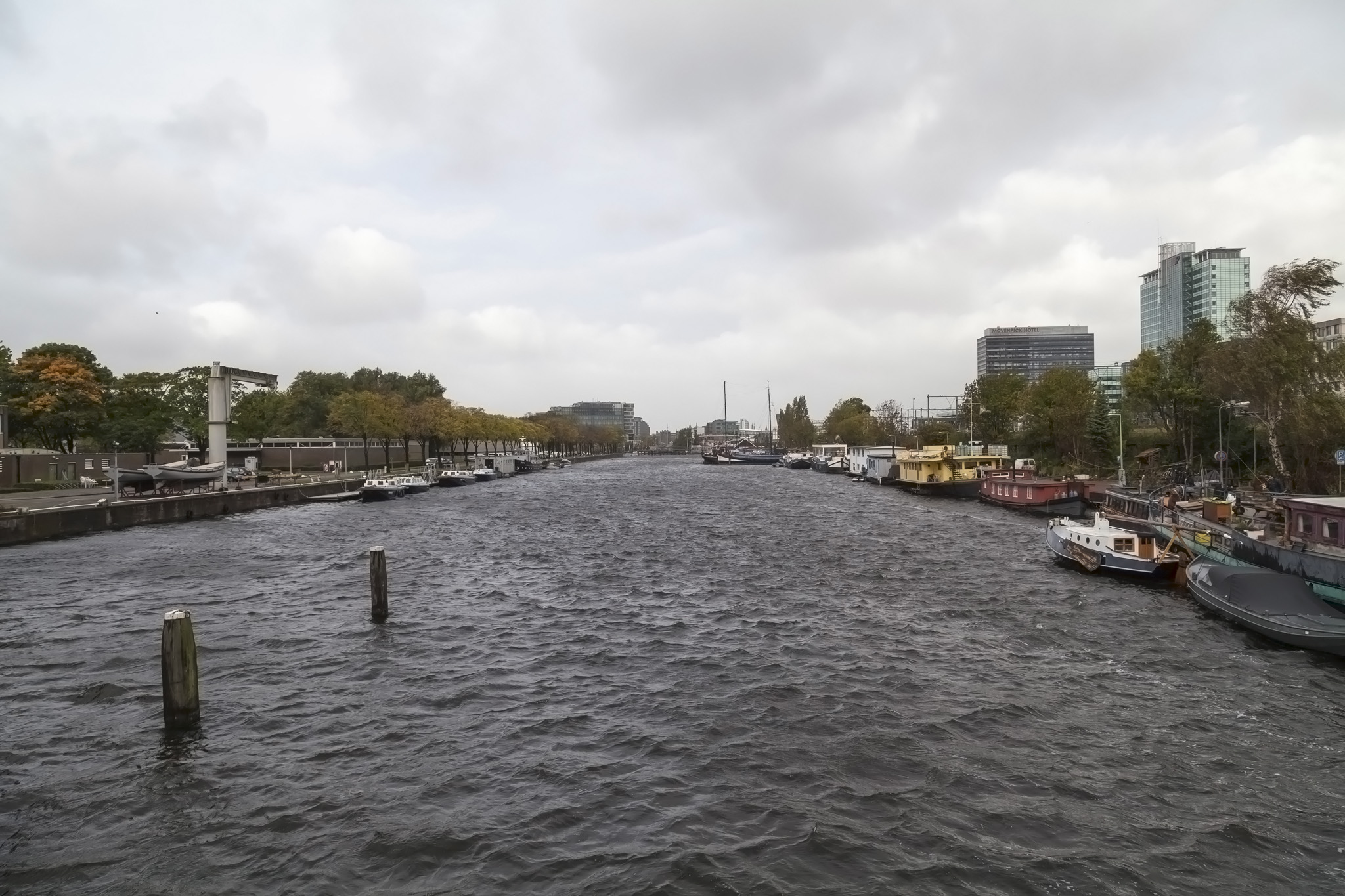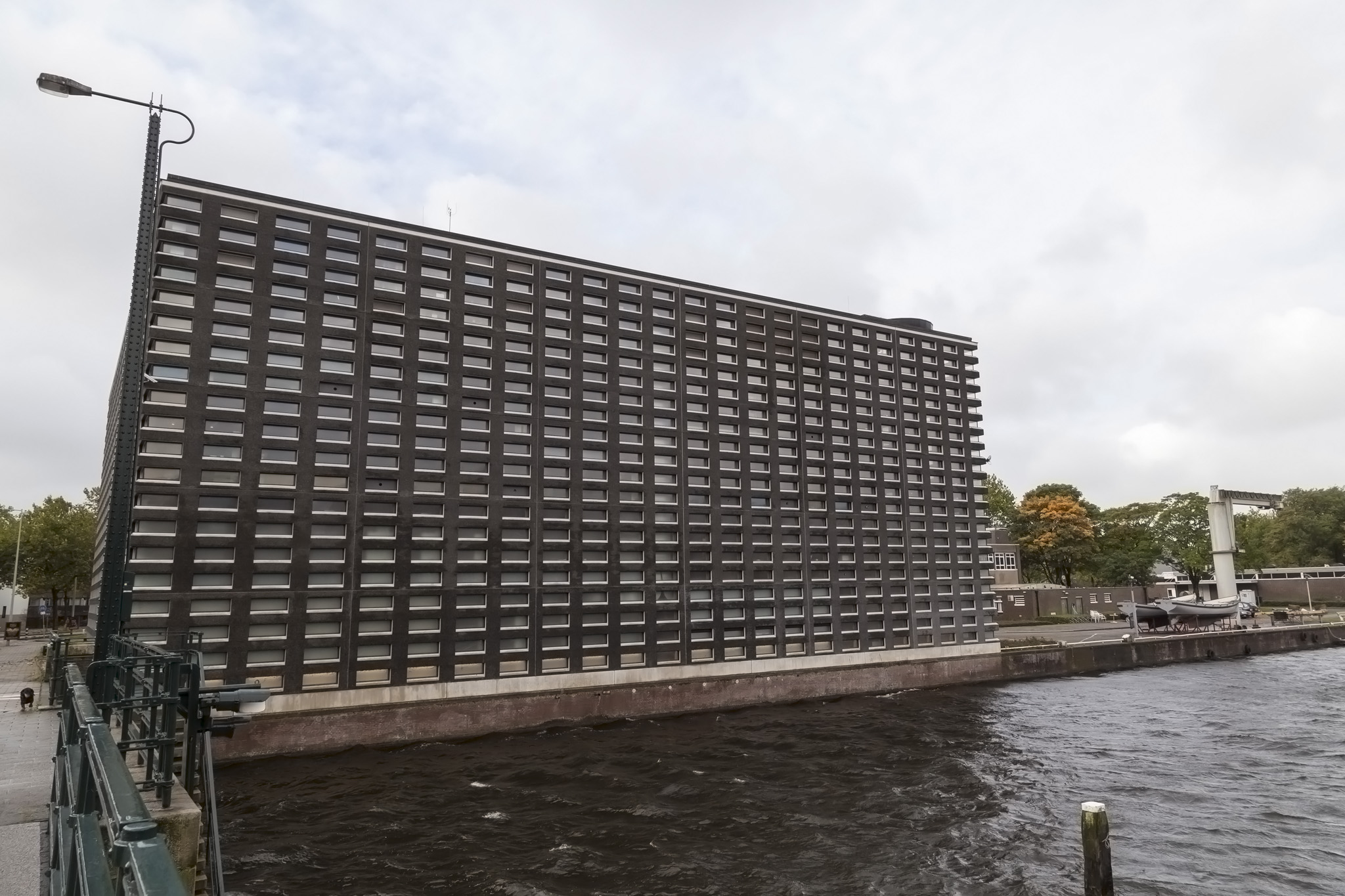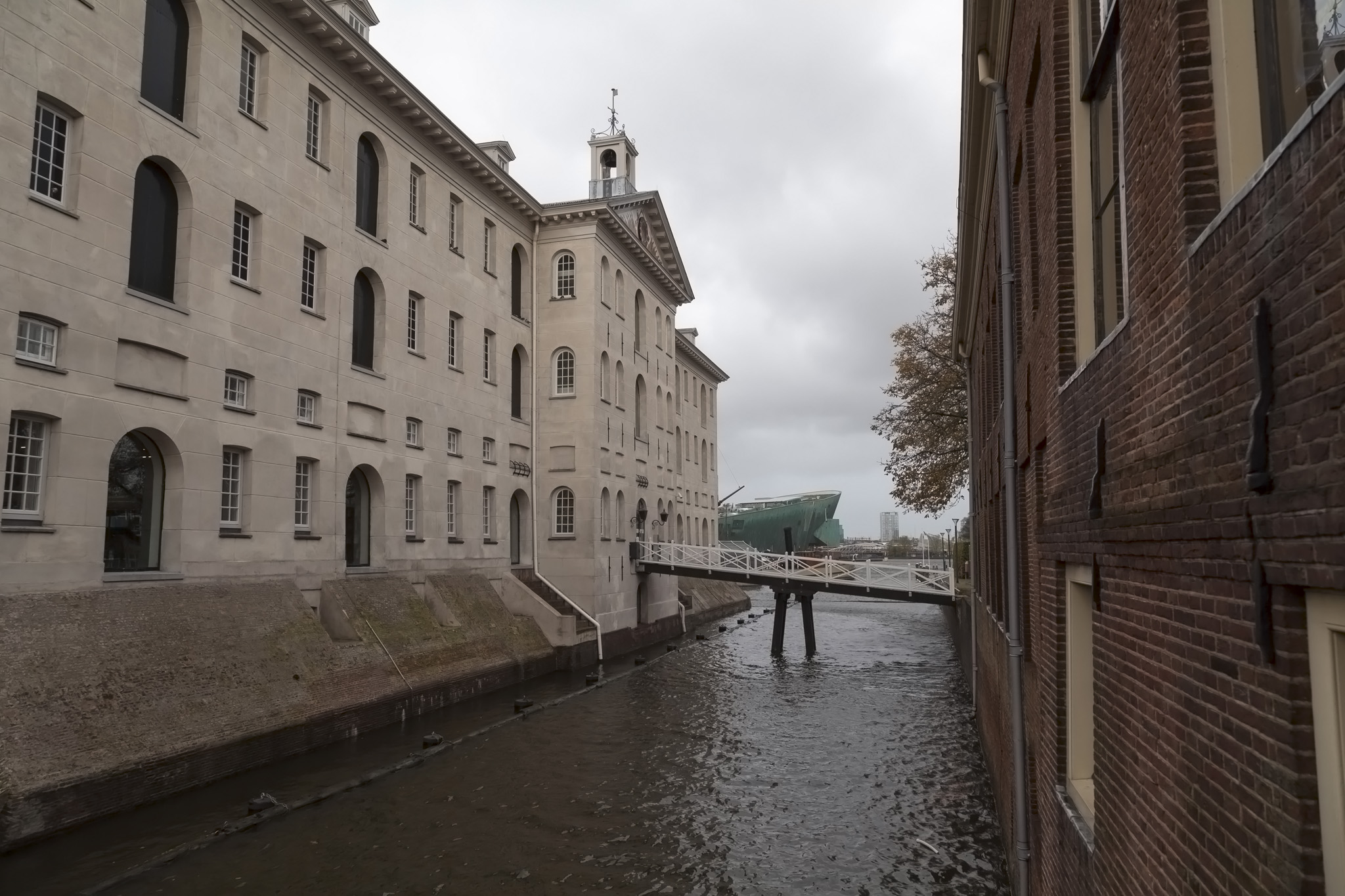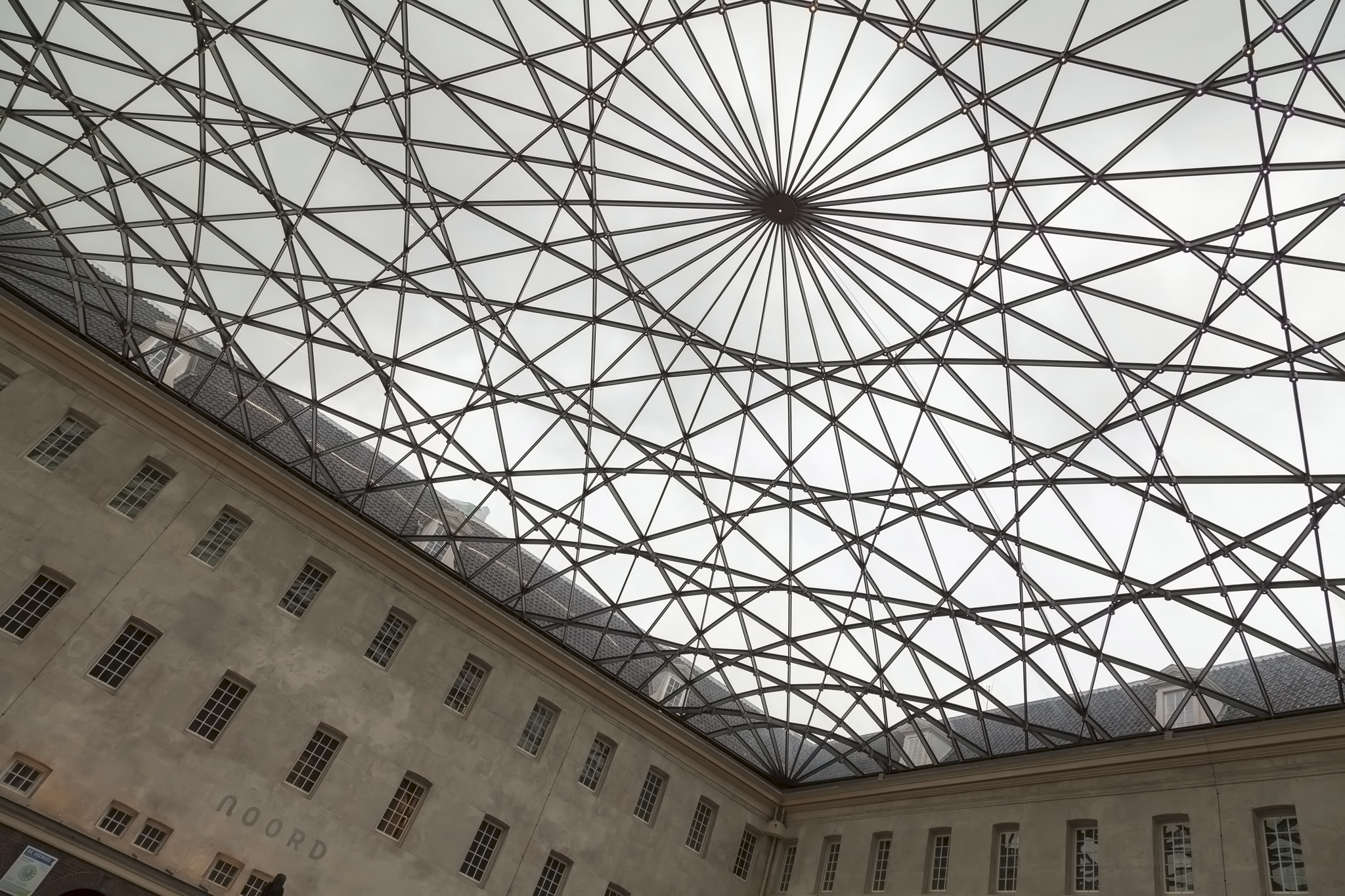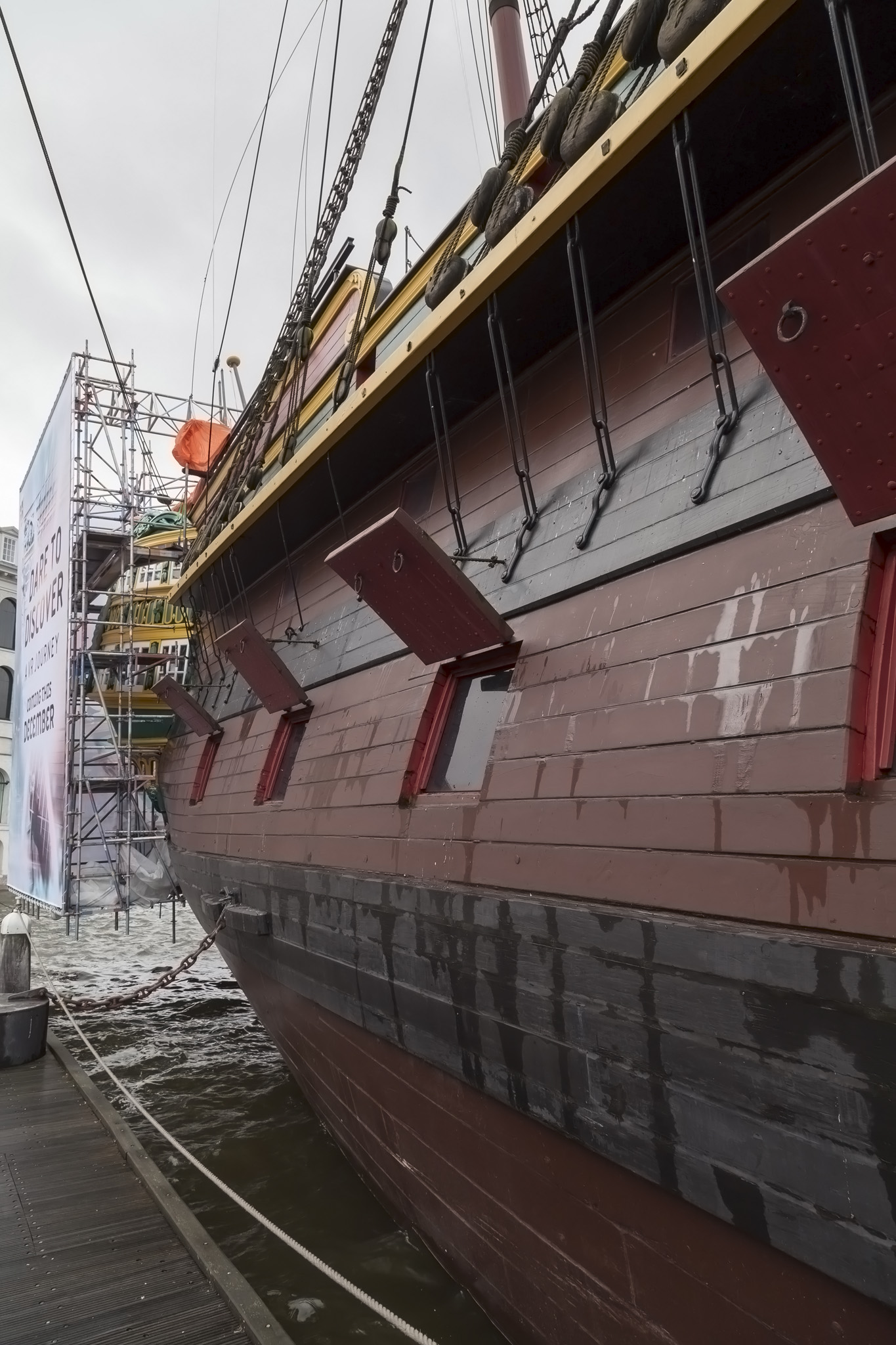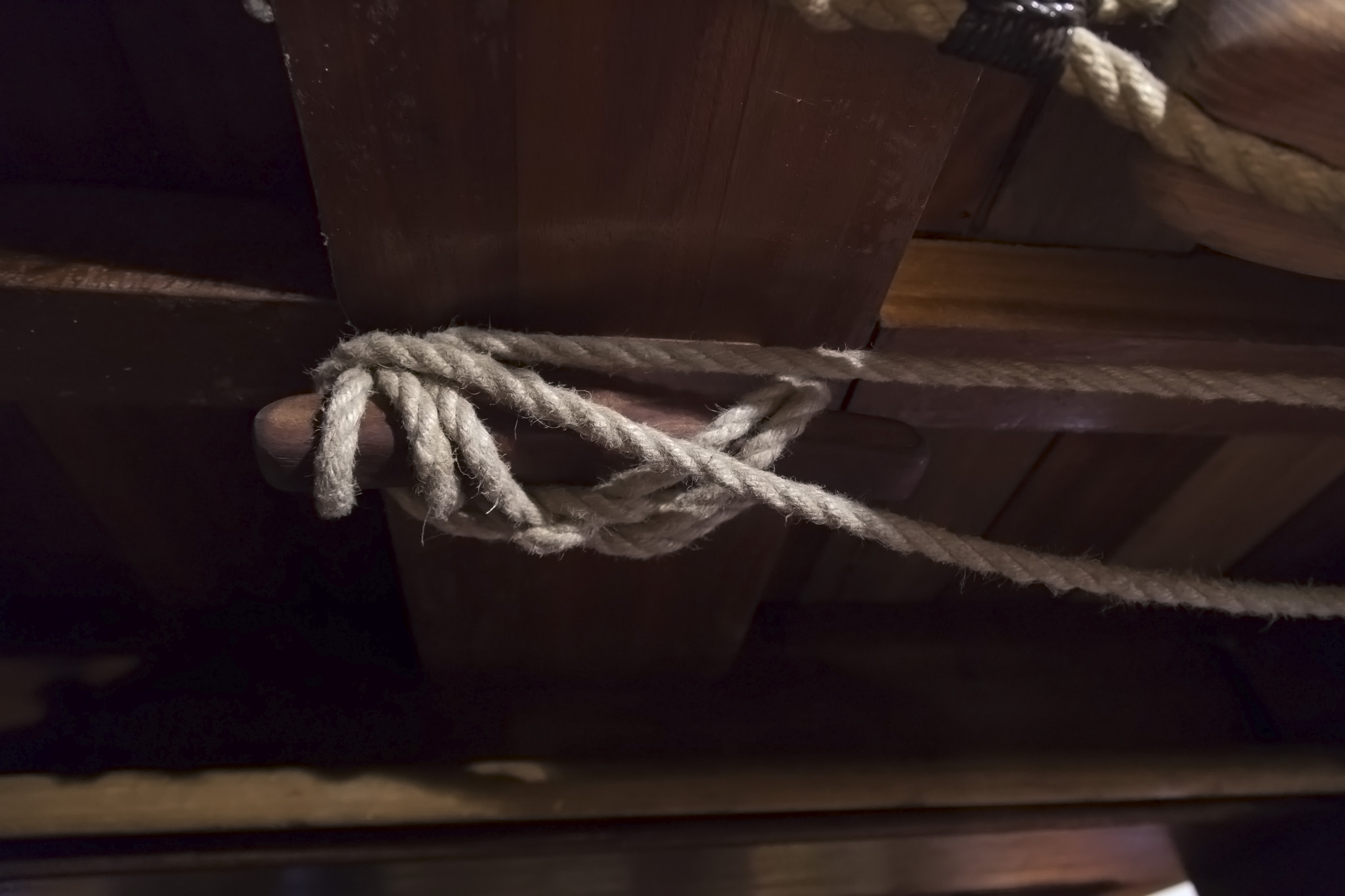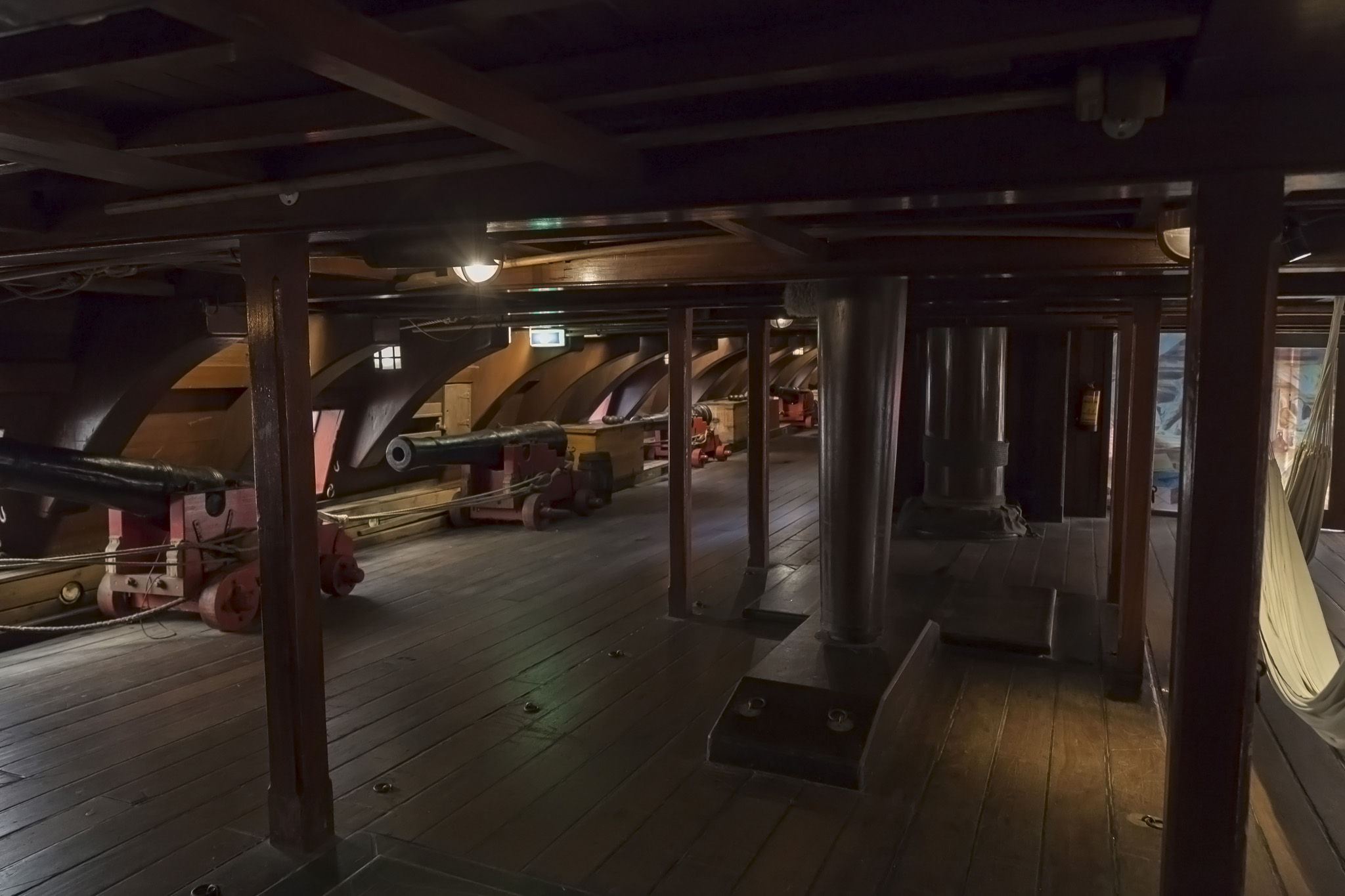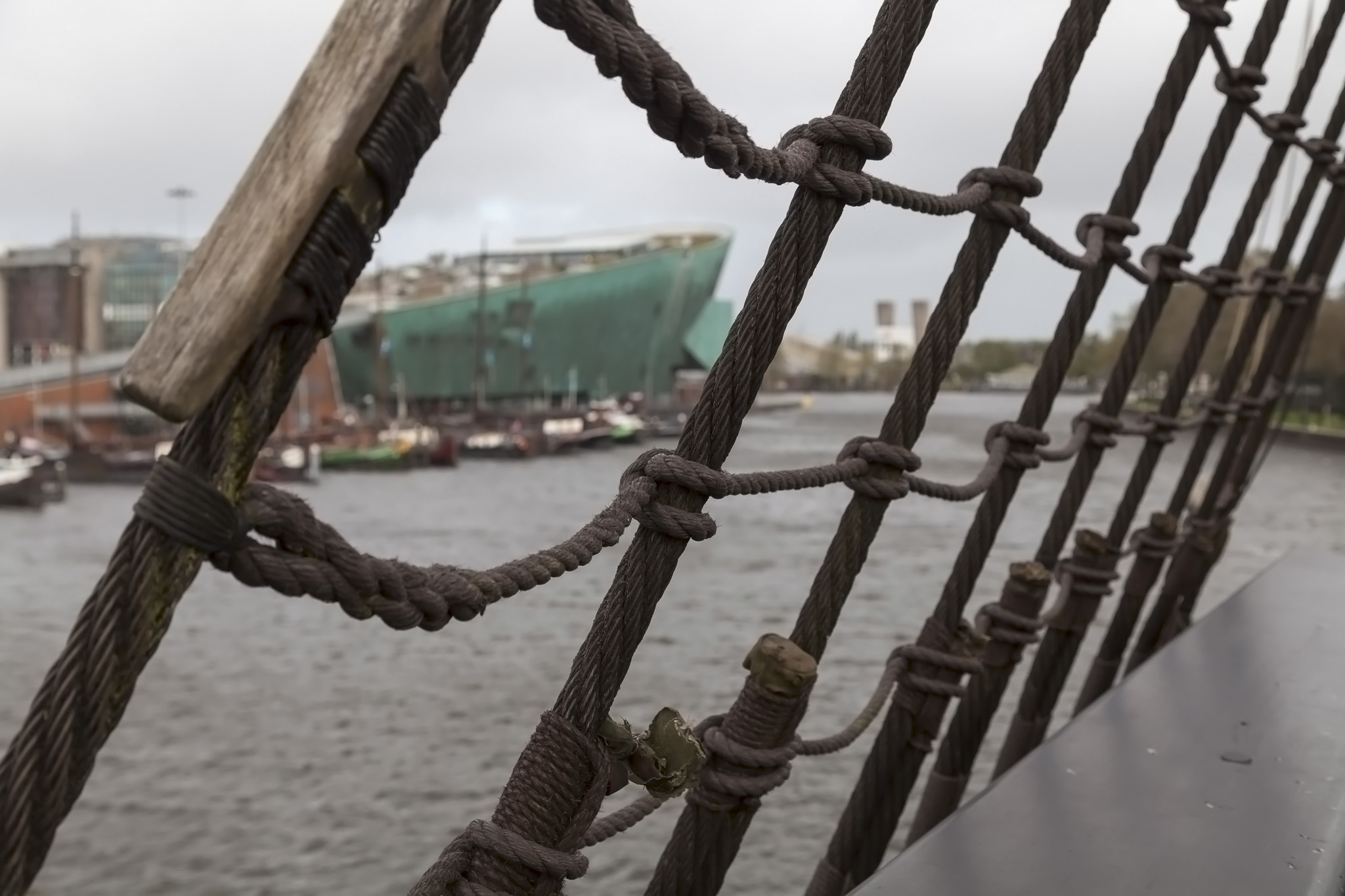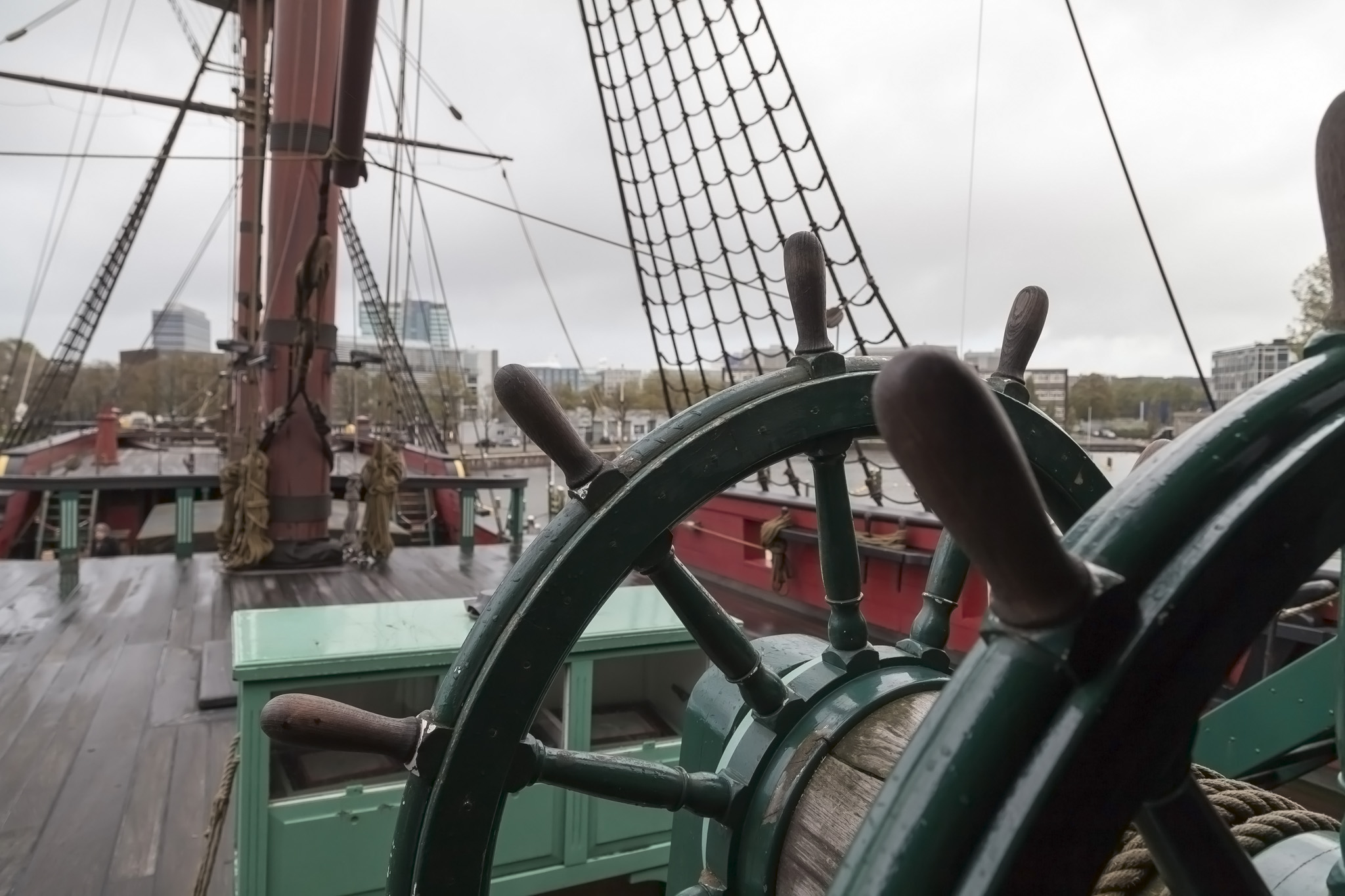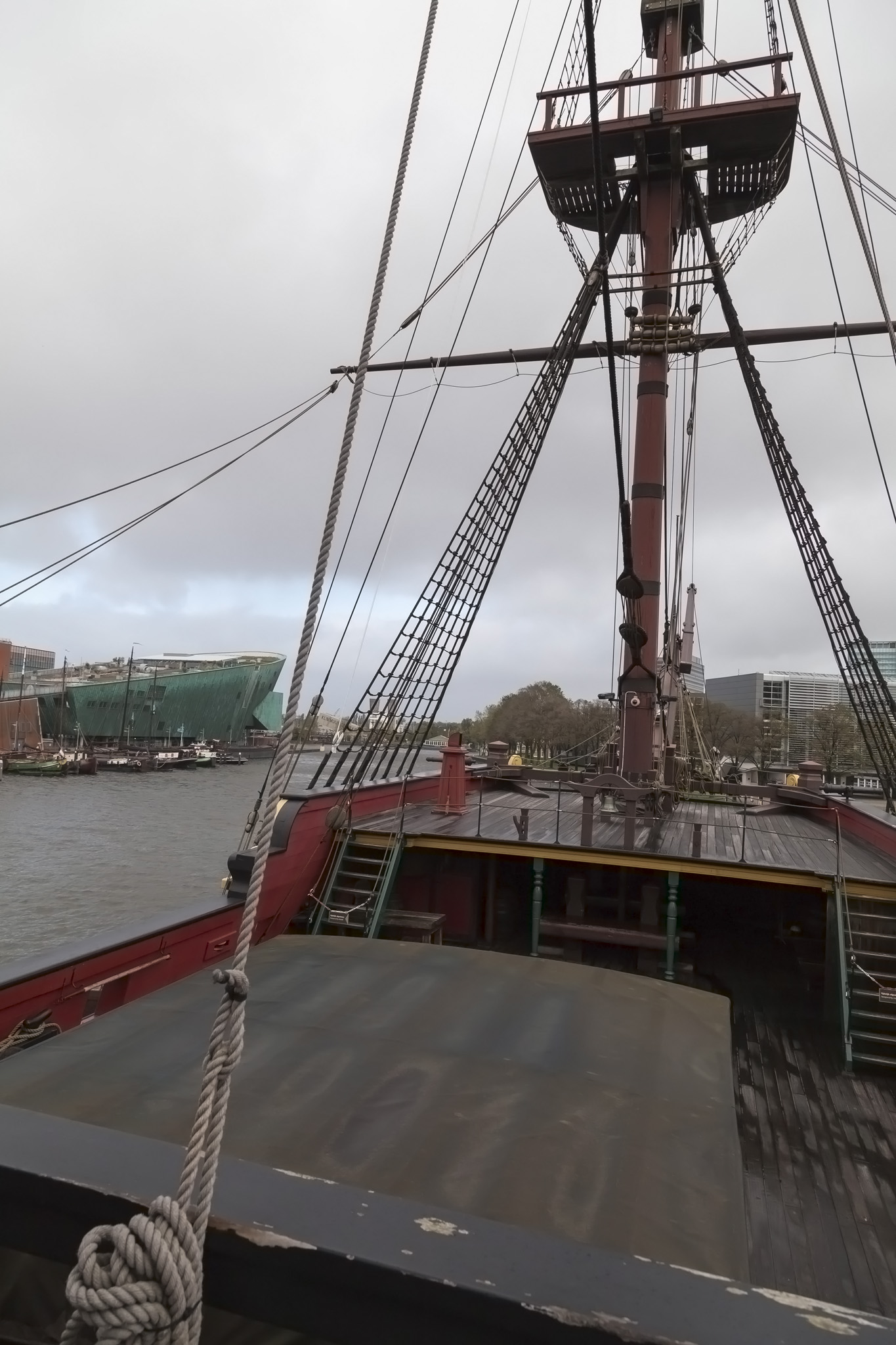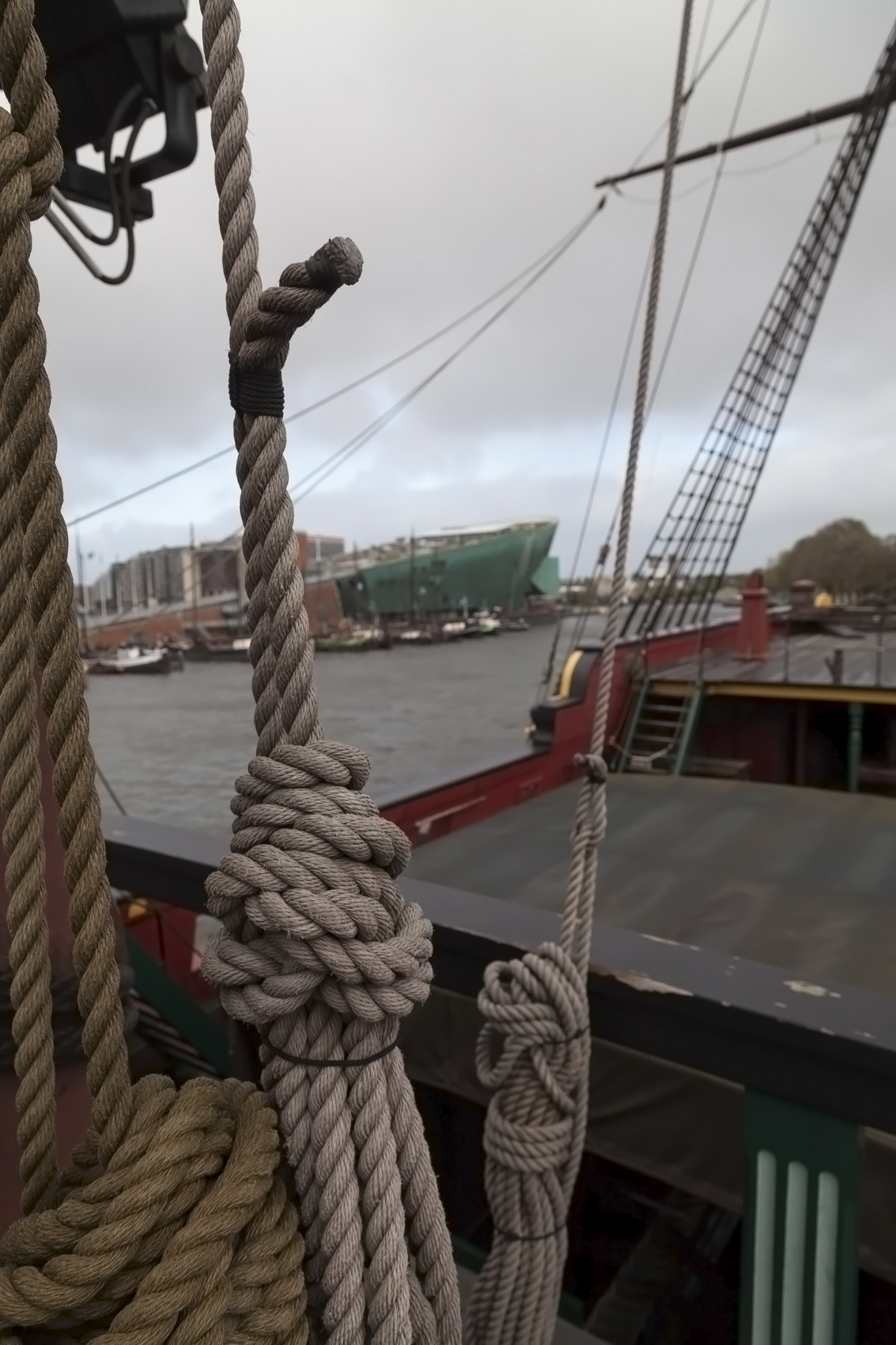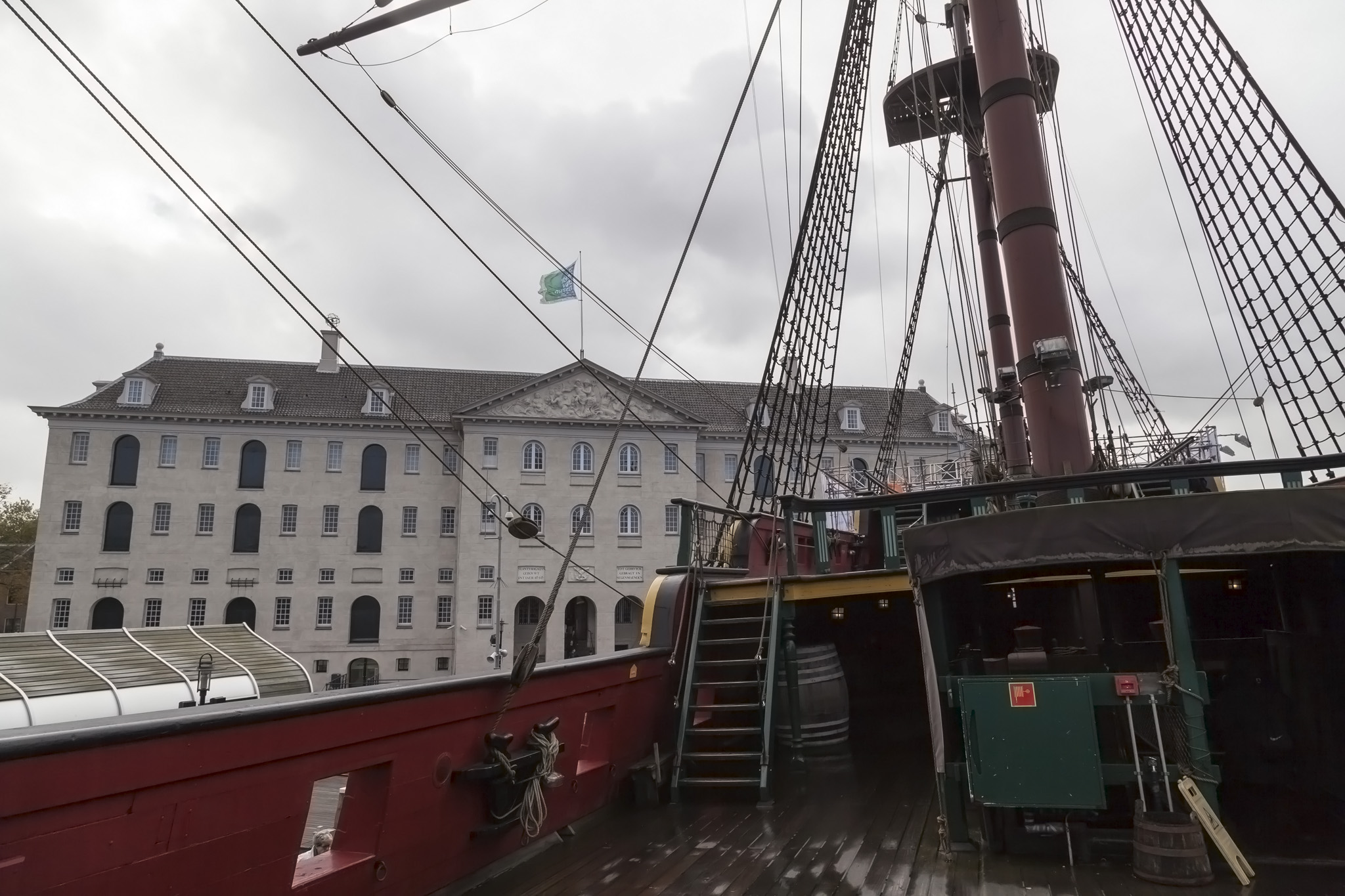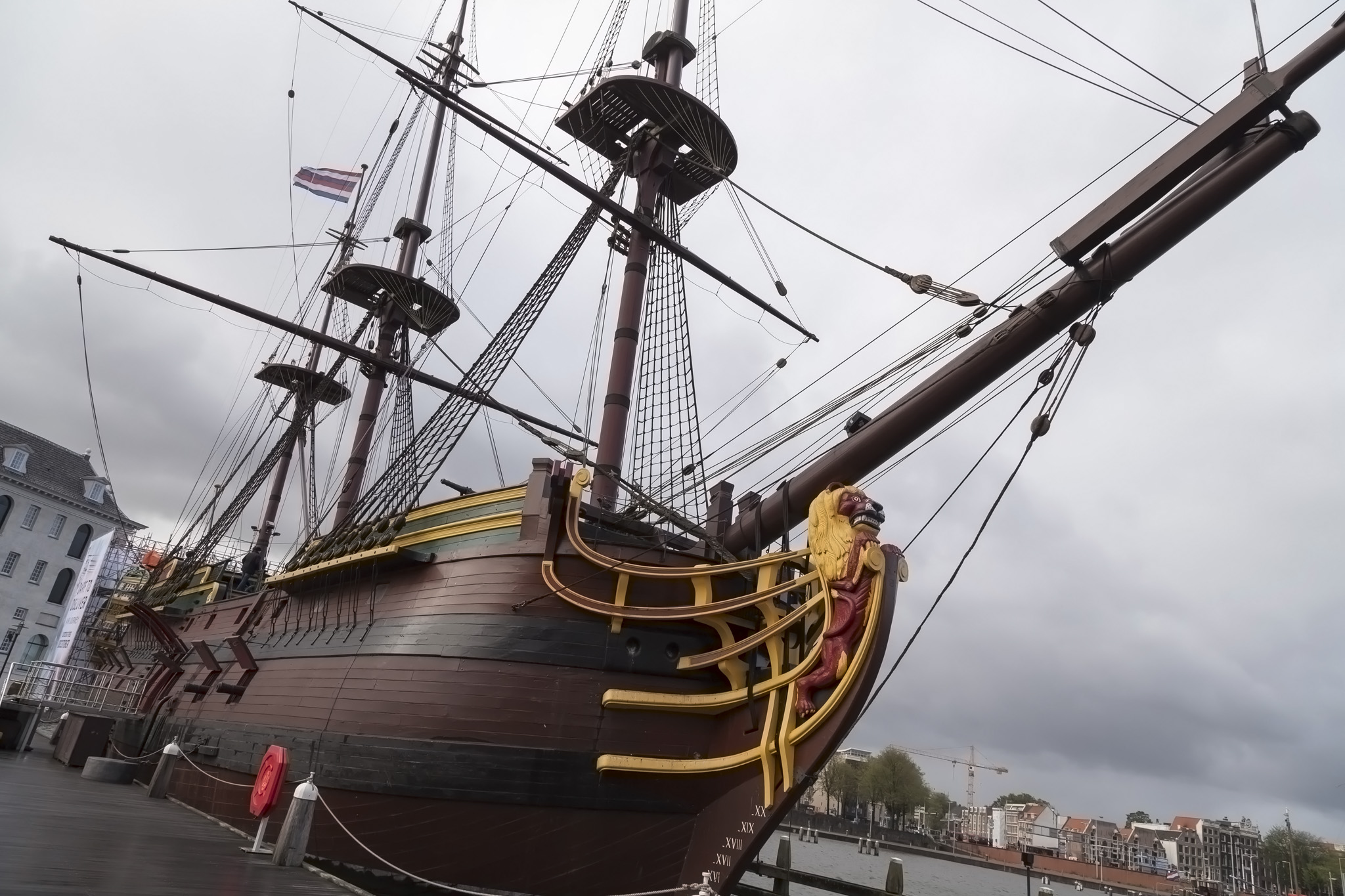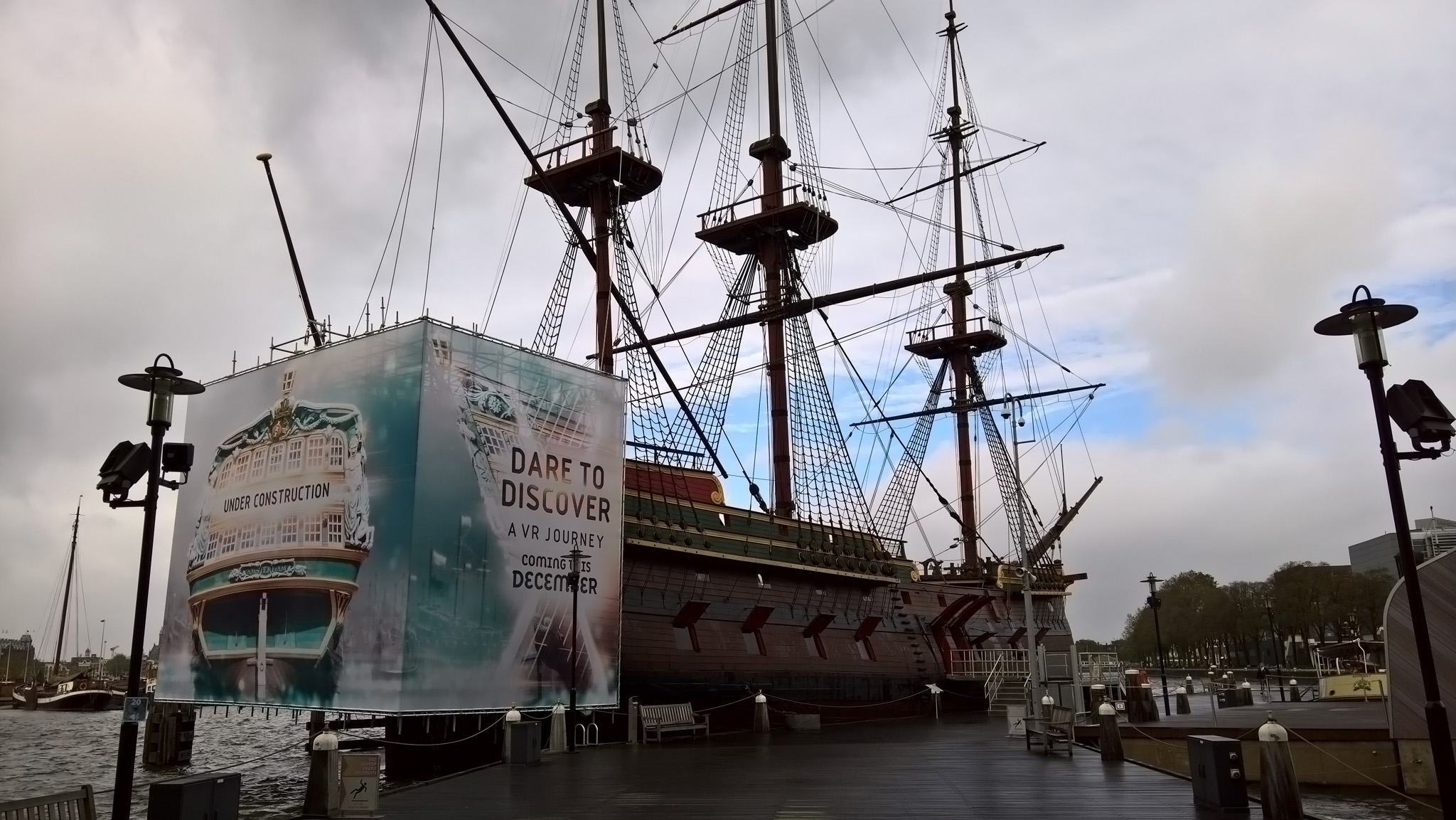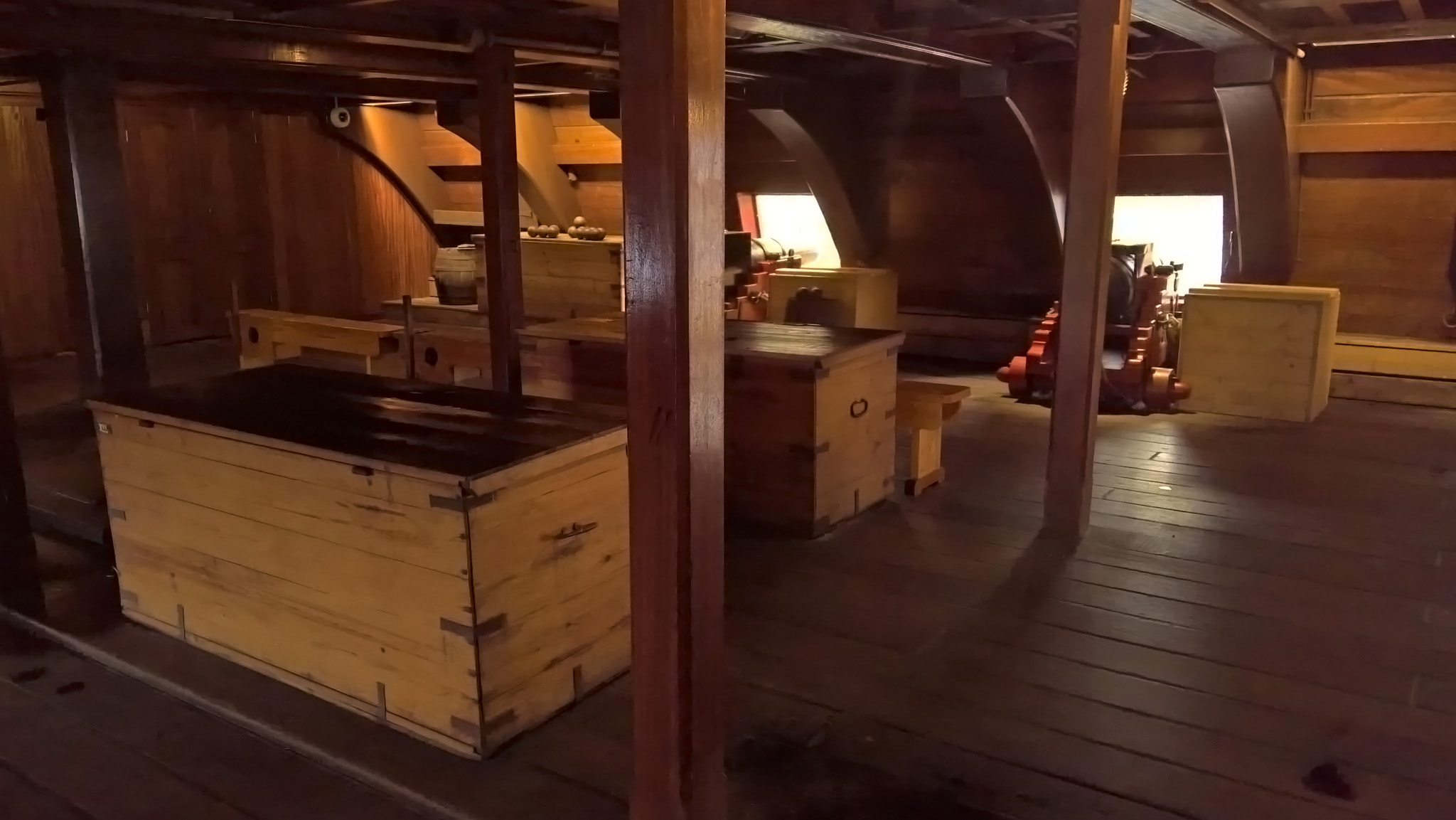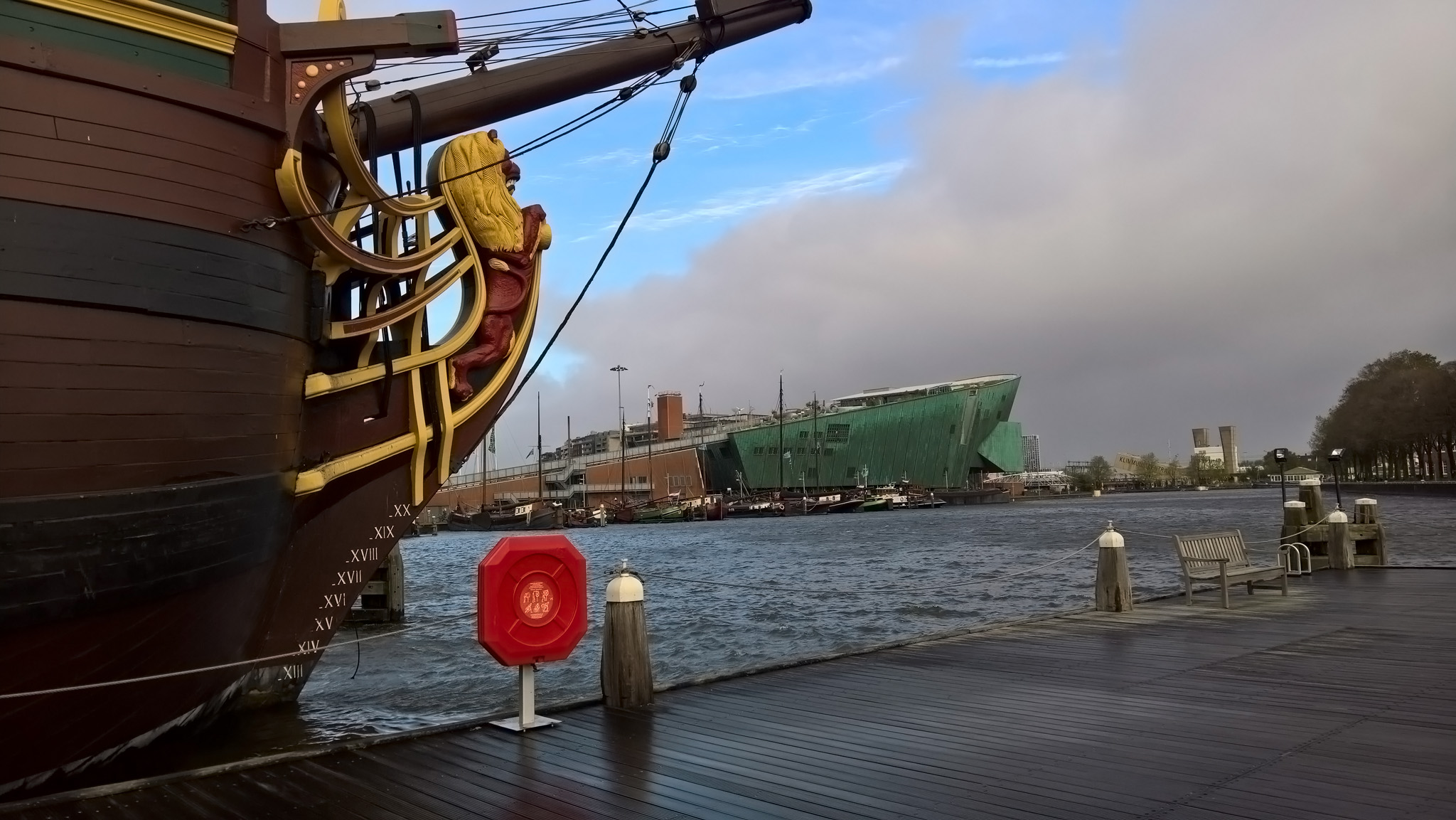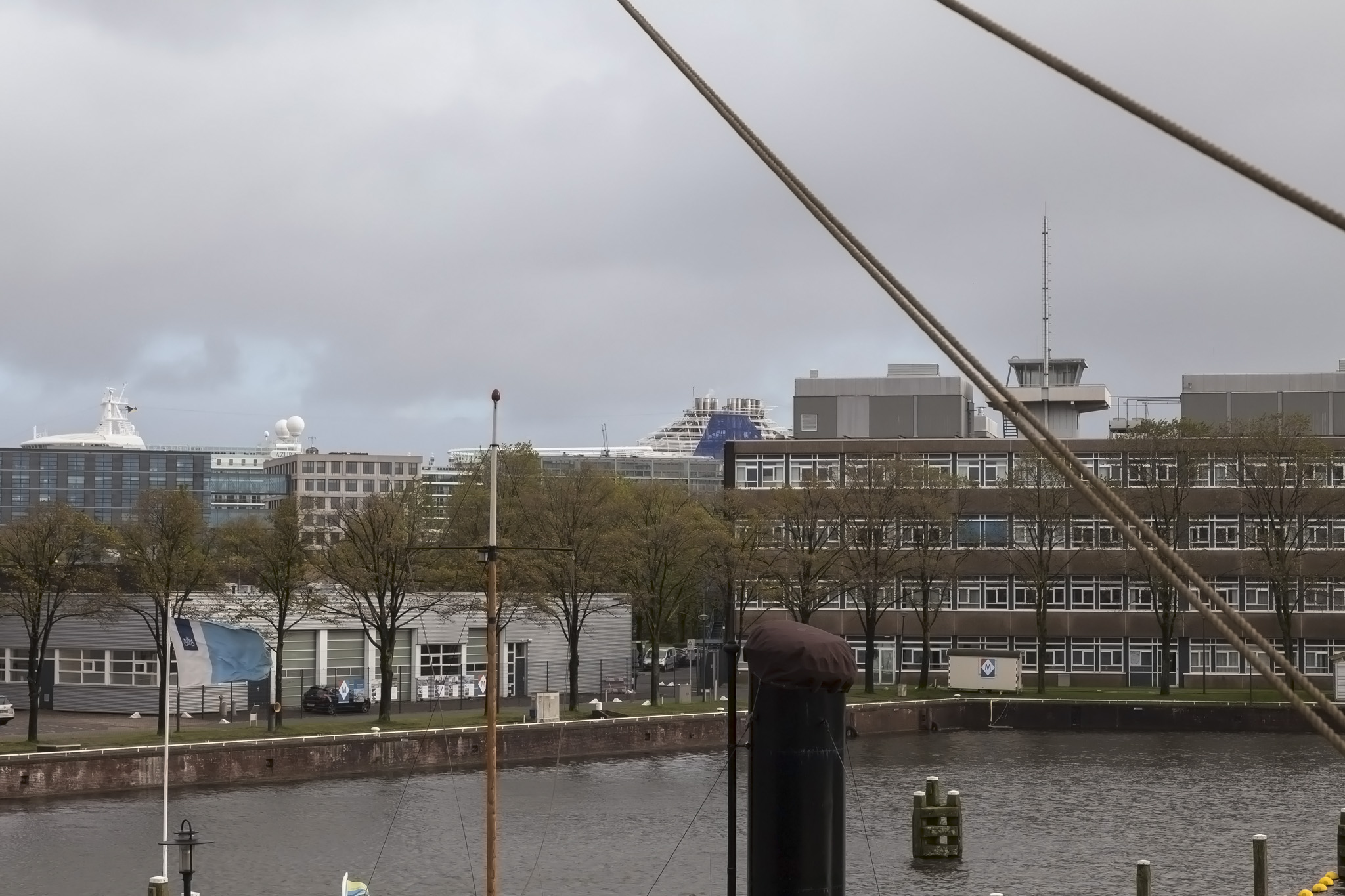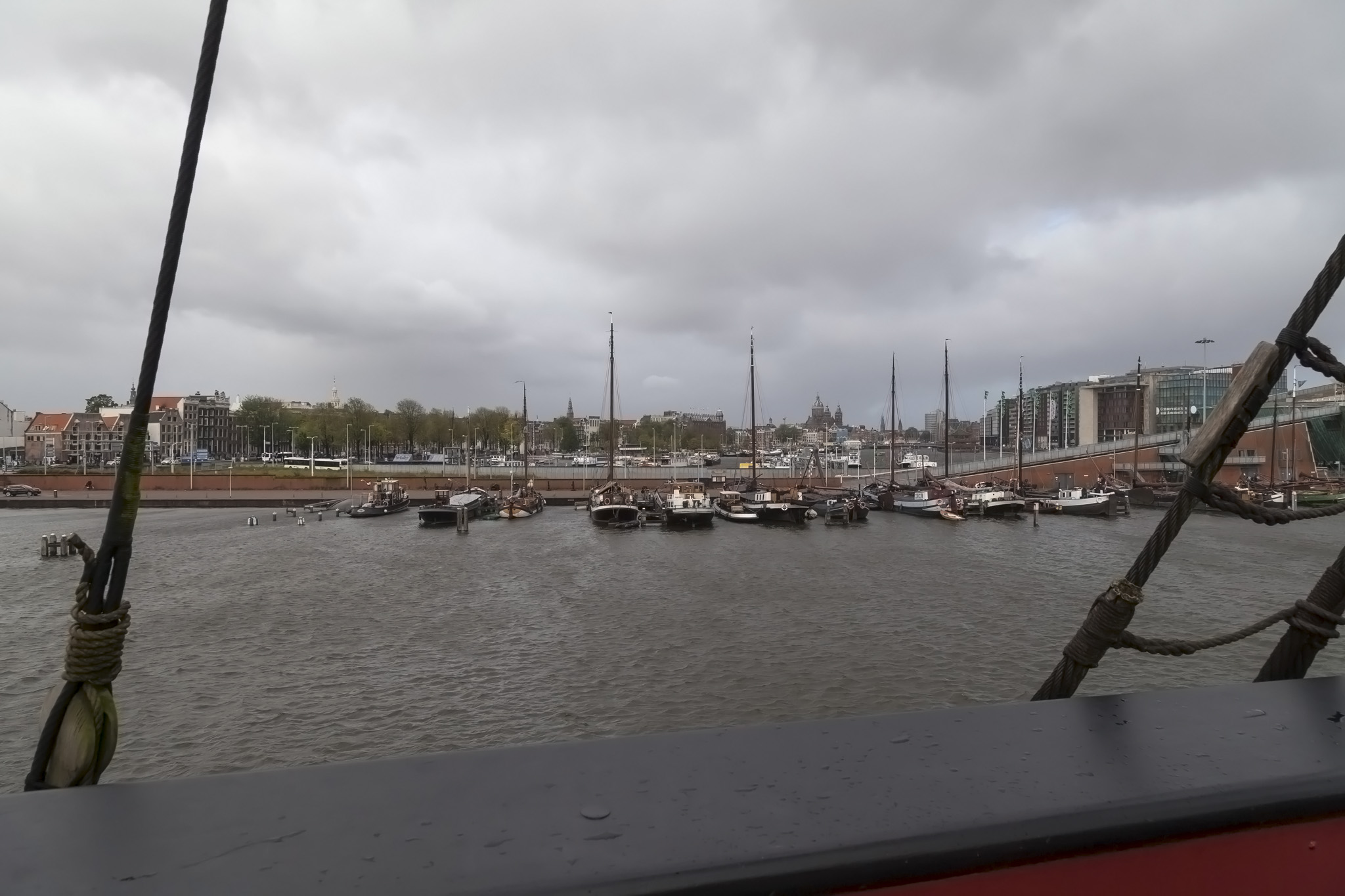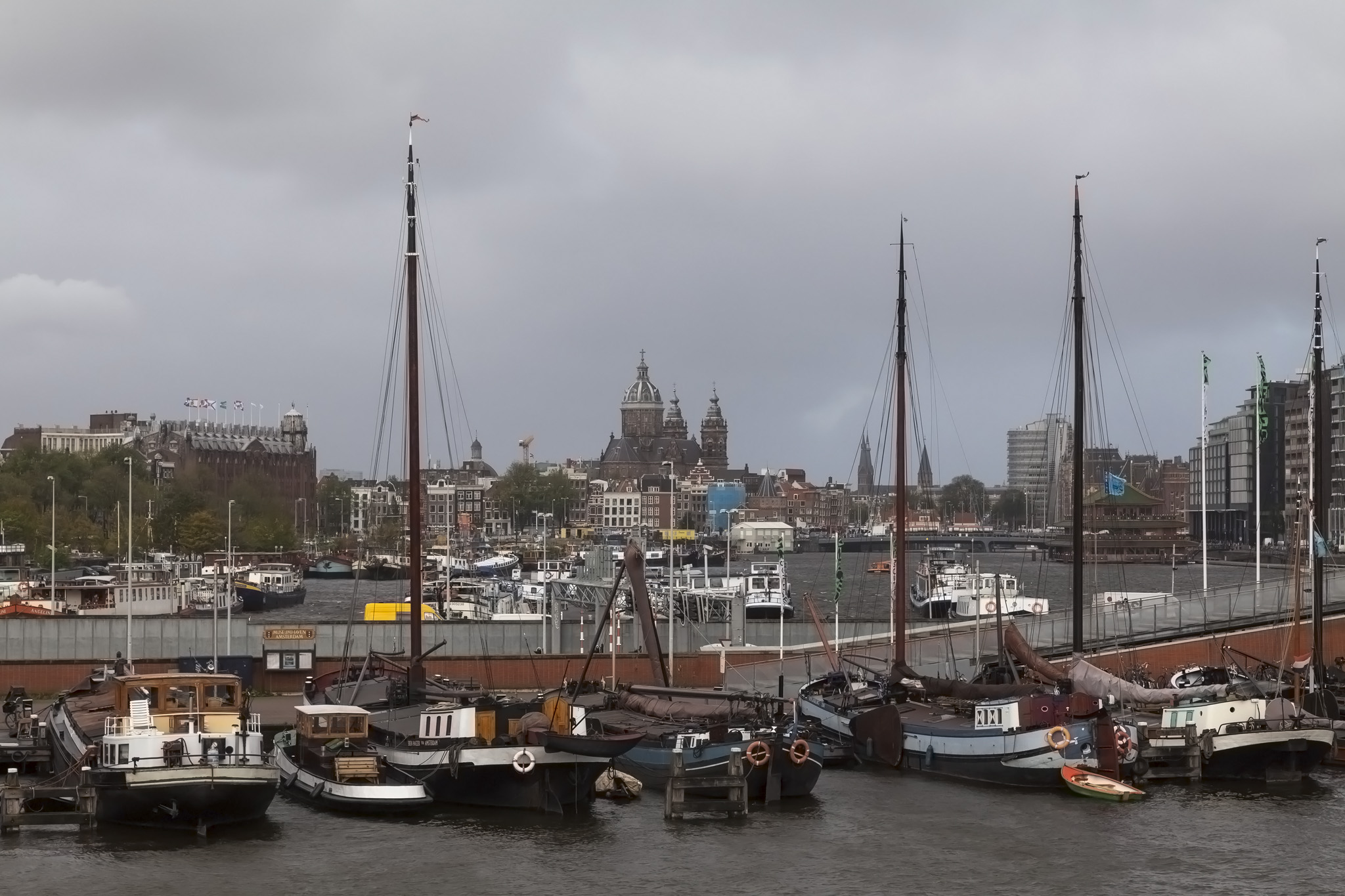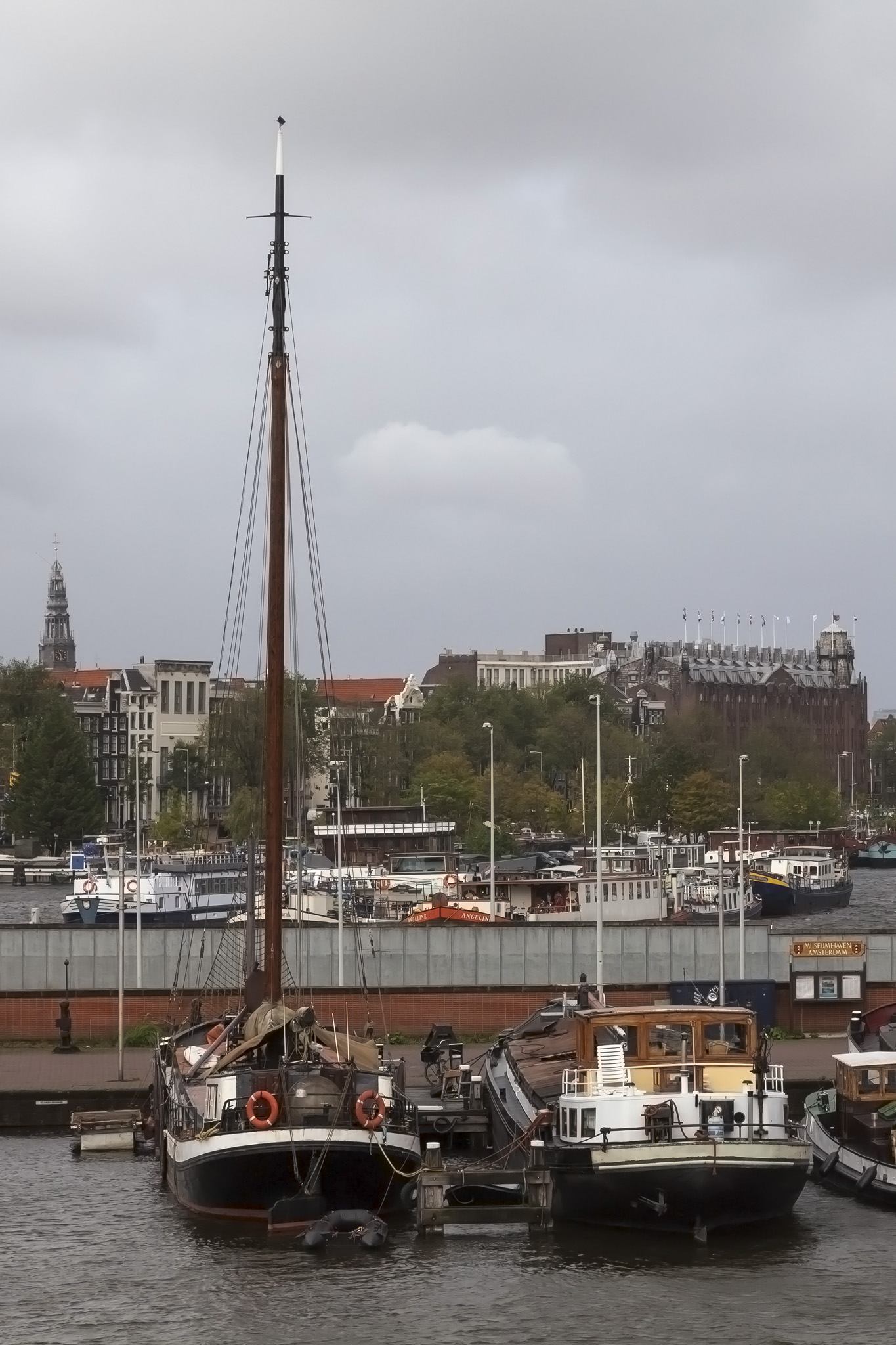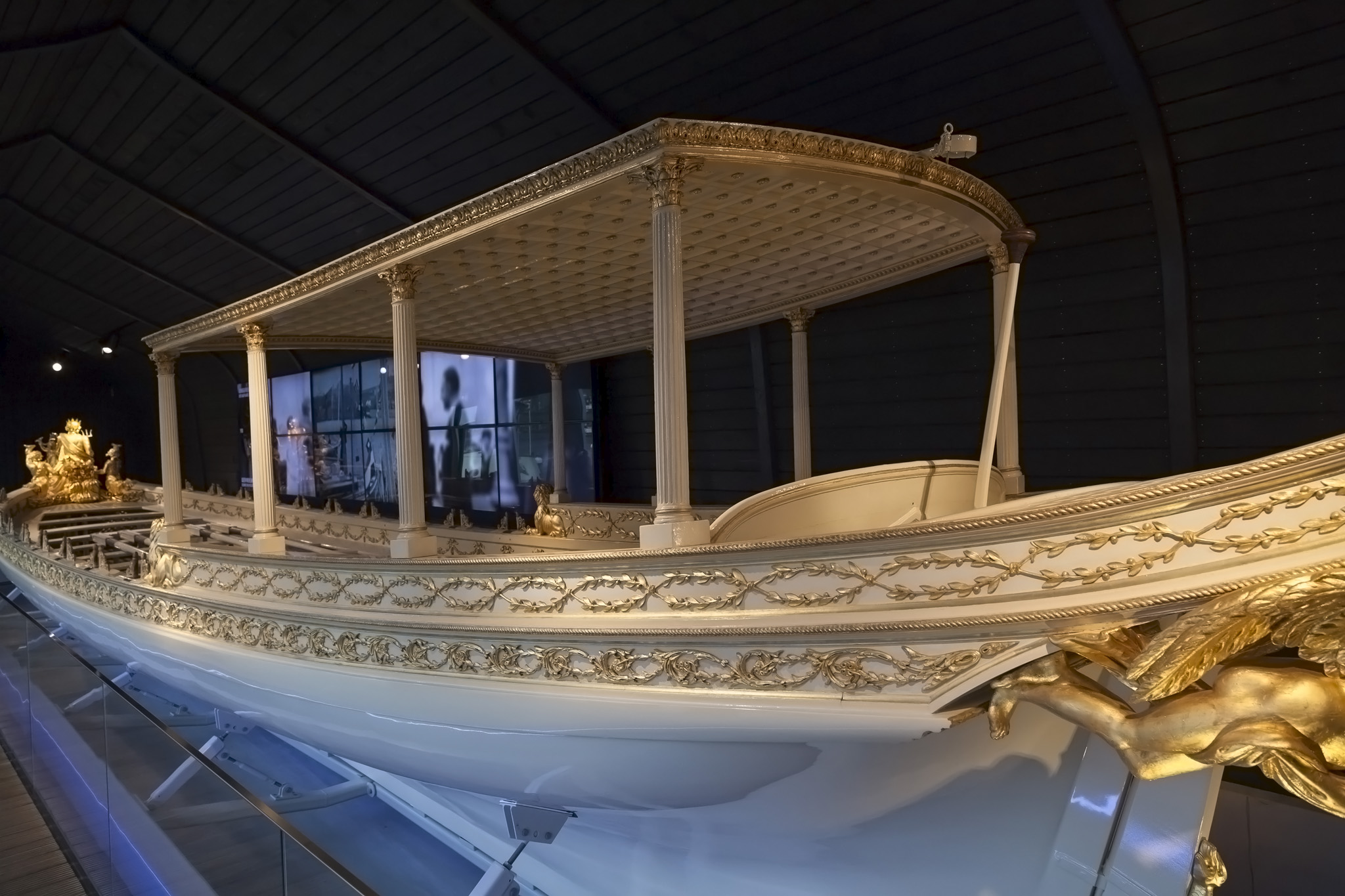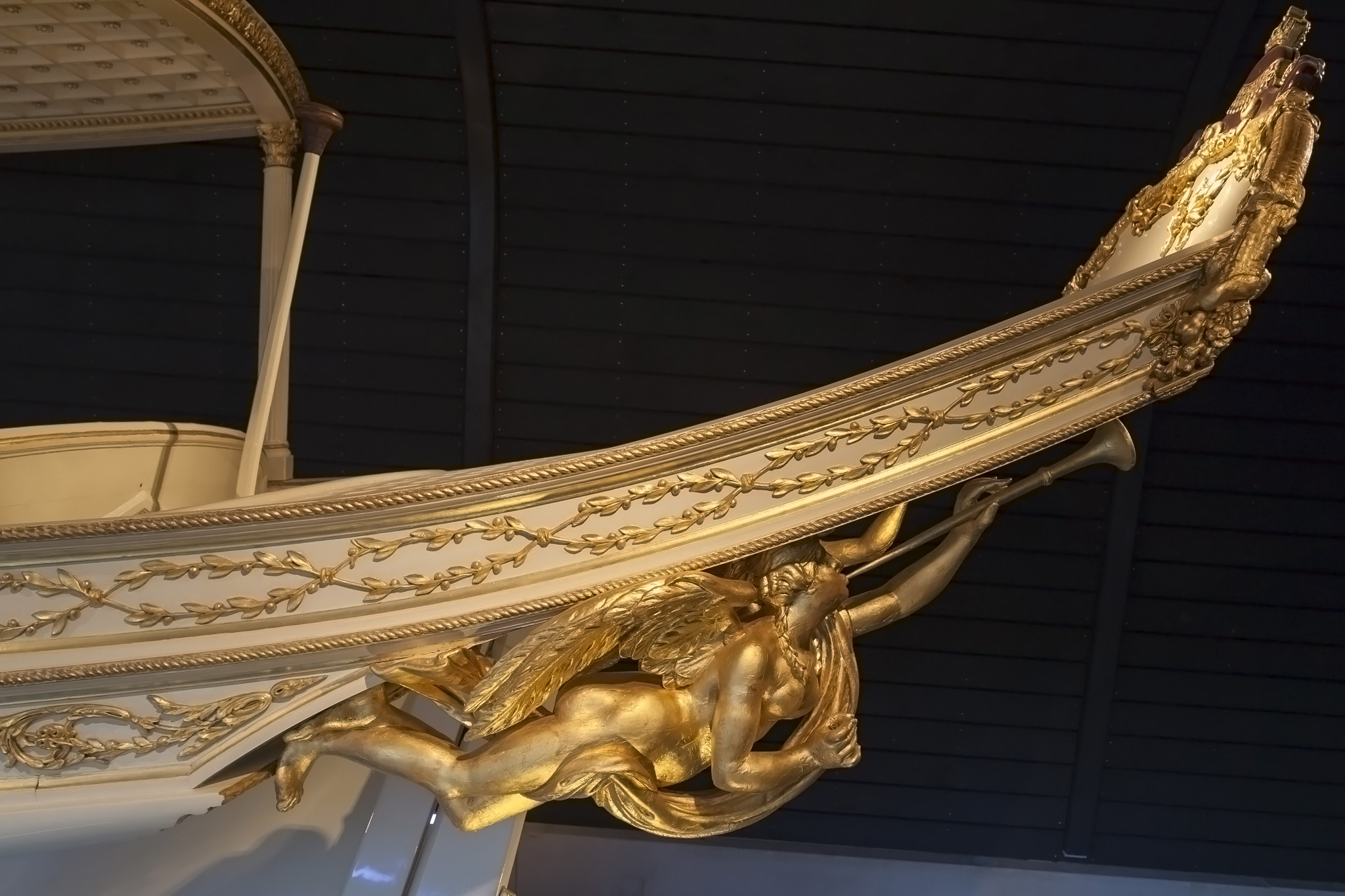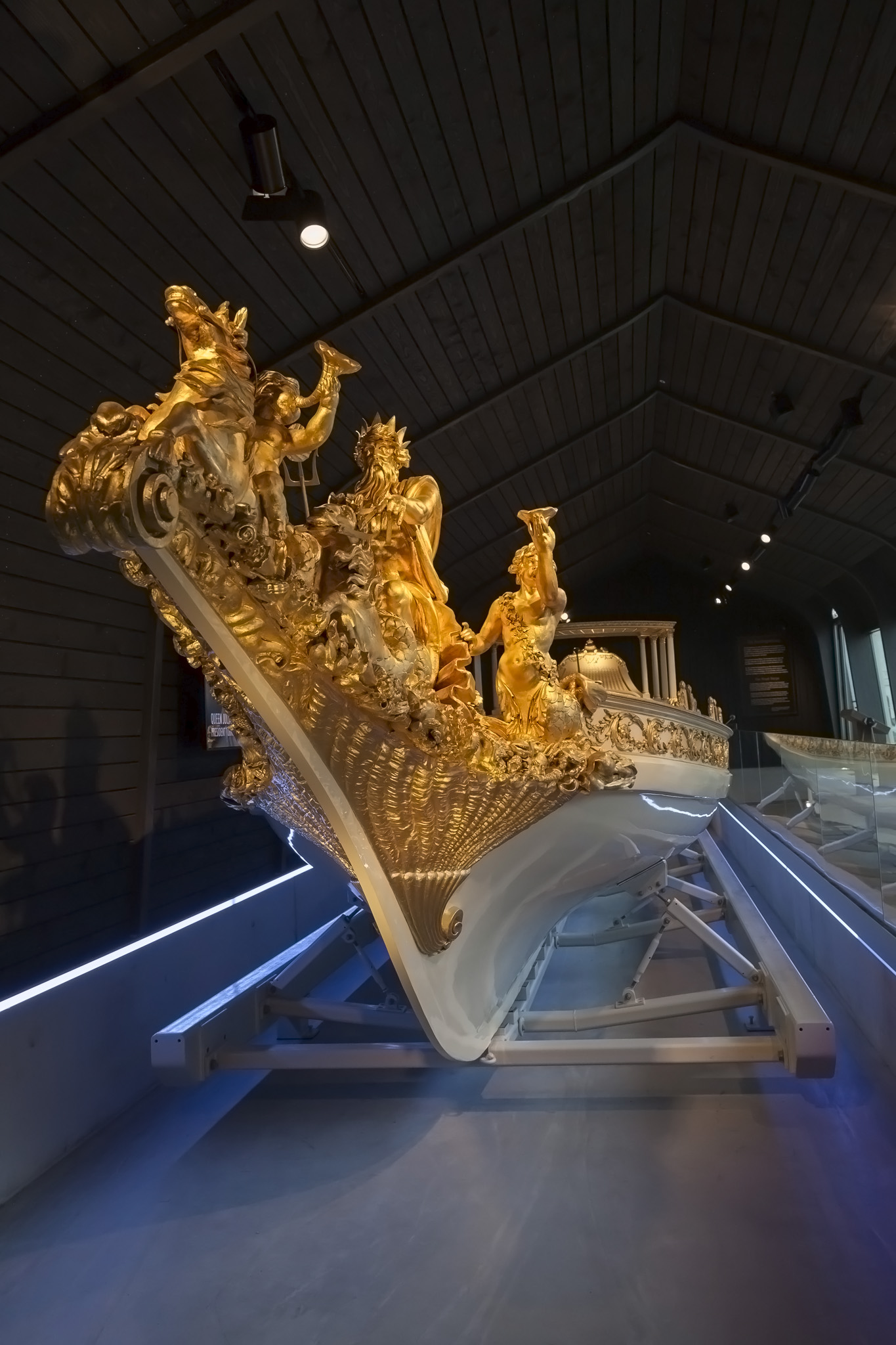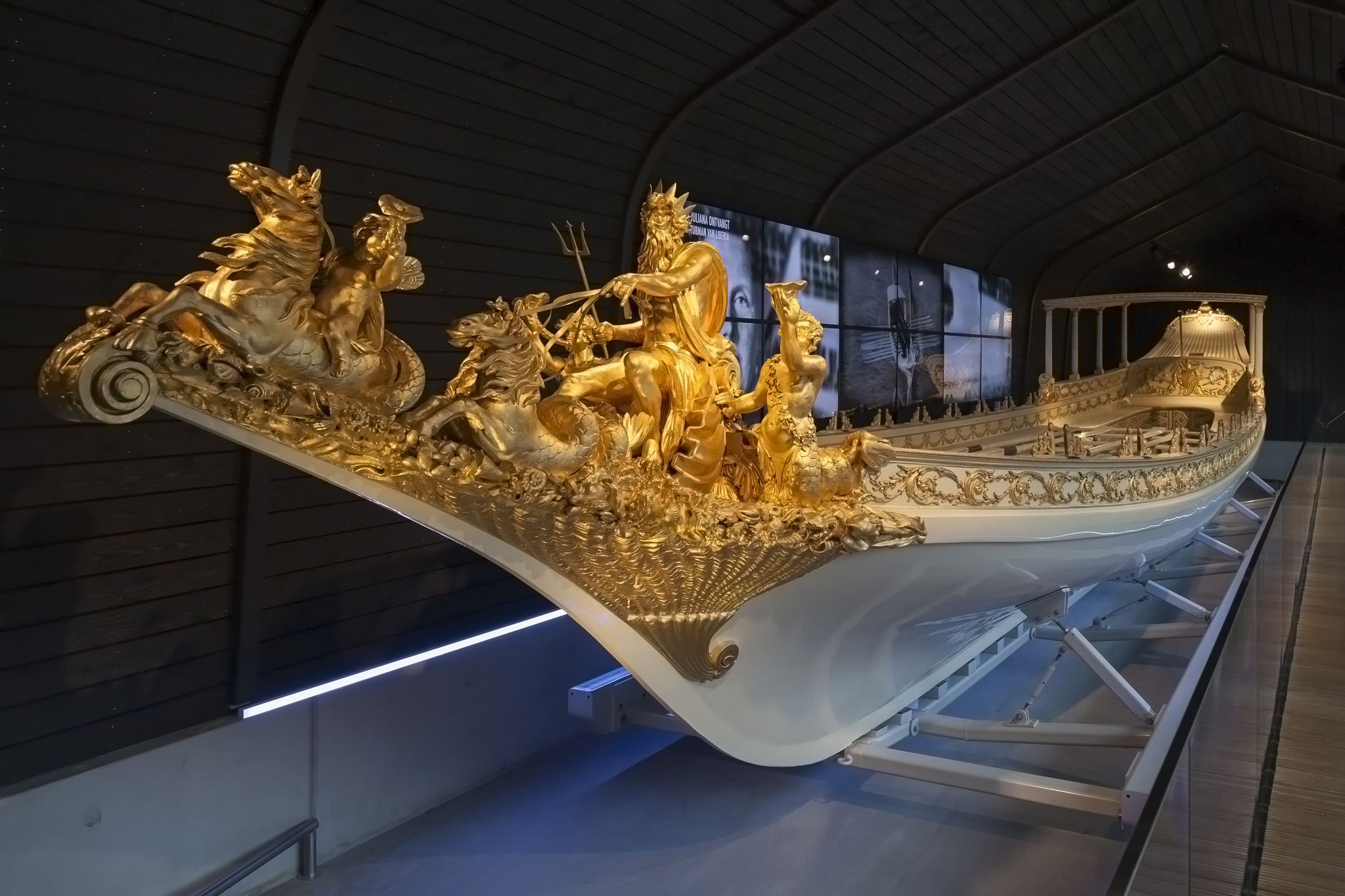On our first evening in Amsterdam we’d been to see a couple of museums to make use of our I Amsterdam city cards, including Oude Kerk, and we were determined to get the most of those cards by carrying on in a similar vein during our full day in the Dutch capital city. I’d done some planning with the maps provided and unlike everyone else departing the cruise ship after breakfast in the morning my wife and I this time turned left when exiting the port terminal, crossed over the road, under a bridge, and headed straight down Kattenburgerstraat (Cat Burger Street?) towards the National Maritime Museum, Het Scheepvaartmuseum (Sheep Fart Museum?).
The walk to the museum was an easy one but the high winds and changeable weather that would sweep over us throughout our trip on Azura to the Netherlands meant that we couldn’t escape a brief downpour before arriving at the impressive maritime building. Built in 1656 the museum building consists of four blocks named after the cardinal points of compasss, forming a square; the courtyard area inside is bright, clean, and covered (handy for drying off while waiting to get our free tickets courtesy of our city card) and contains tickets booths, souvenir shops, cloakrooms, etc.
We only really hit three places in the museum in order to maximise what else we would see in Amsterdam, although we could have stayed for a lot longer and seen a lot more. The first of these was a reconstructed, 18th-century, cargo ship.
In the hold of the ship are plenty of crates and ropes. As the ship is only a reconstruction far from restricting touching anything people – children in particular – are encouraged to climb around if they so wish. We thought this was a nice touch. Many of the areas below deck seemed to have surprisingly high ceilings. Our experience on other, actual sailing vessels had prepared us for far more crouching. A section towards the rear of the ship with officers’ quarters was more what we’d anticipated. On the top deck it was possible to get some decent views of the city of Amsterdam and looking northwards in the direction from which we’d come we could also see the top of our cruise ship, Azura over the tops of other buildings.
Across a jetty from the reconstructed ship was The Royal Barge.
The Royal Barge was designed by C.J. Glavimans. The ship was built between 1816 and 1818 at the Navy shipyard in Rotterdam […] It was last used in 1962 for the silver wedding anniversary of Queen Juliana and Prince Bernhard.
The final area in the maritime museum that we ended up seeing (and surprisingly enjoying) was a showcase of cargo transportation around the world and a room that you entered (there was only my wife and me there), waited for the doors to close, then experienced what it would be like to be a case of wine with a virtual ride by crane, forklift, air transport, shipping, and carrying through the wonders of four large screens set in each wall. No photos, sadly, but quite a lot of fun for a few minutes.
